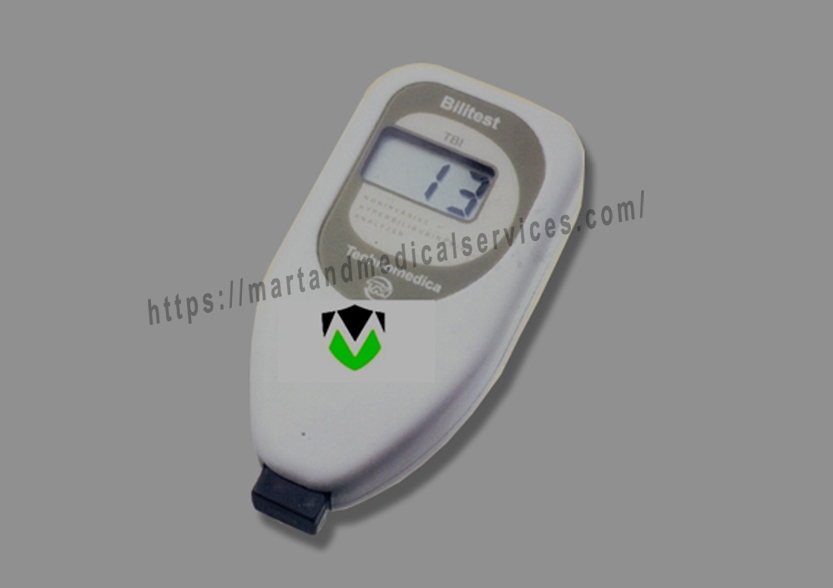
OVERVIEW
BILITEST – device for objective evaluation of hyperbilirubinemia level in newborns using non-invasive transcutaneous method.
Commonly in newborns bilirubin determination is performed on a forehead near nose or on the upper part of the breast. Only a slight touch of a mobile measuring head to a baby’s derma is needed for measuring. The result is given in international units for transcutaneous bilirubin index (TBI). This index has a high correlation degree with plasma bilirubin concentration (0,92).
TECHNICAL SPECIFICATION
- Method of measurement – reflectance bichromatic photometry.
- Light source – two white light-emitting diodes (LED).
- Detector – two photocell system.
- Measuring range – 0-50 (in unit of TBI) approximately corresponds to 0-500 μmol/l .
- Optical unaccuracy – <10%.Imprecision (CV%) – <2%. Notes:
- a) Metrological characteristics have been verified by Russian Federation State Commitee for Standartization and Metrology Body on the basis of five Reference Reading Checkers.
- b) Control Reading Checker’s data should be within the limits specified directly on the spots of Checker’s installation within the covering.
- Correlation between TBI and laboratory values for serum bilirubin levels – more or equal to 0.92.
- Readout – three digits liquid crystal display (LCD).
- Measuring cycle time – ~2 seconds. Between the measuring cycles the device is in a stand-by mode.
- Power source – 3 batteries of AAA (or LR03) type.
- The number of measuring cycles without replacing the batteries (during battery life) – >100,000
- Weight (with batteries) – 150 grams.
- Dimensions Width x Height x Depth – 65x135x35 mm.
